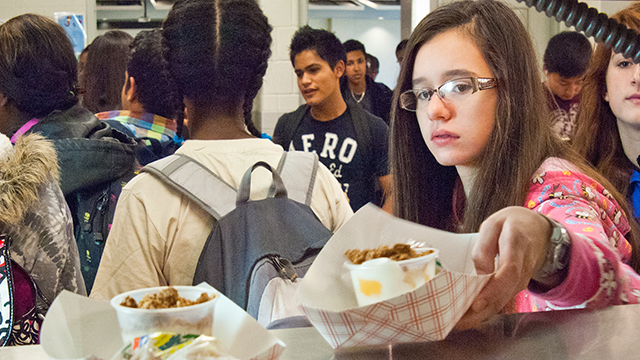Featured media resource: Making Lunch Local for California Kids (Youth Radio)
California public schools serve 560 million lunches a year. In a place that also grows a lot of this country’s food, it makes sense that California kids would eat California meals. That’s the idea behind a new school lunch plan that rolled out in late October called California Thursdays. Fifteen districts across the state have partnered with the program, including the biggest, like Los Angeles and San Diego. Youth Radio reporter Maya Escobar samples one of the new California Thursday recipes, and goes over the benefits and challenges involved in overhauling school lunch.
Do Now
How can schools make lunches more appealing to teens? Are teens willing to eat healthier, locally-sourced school lunches? Why do you think some pushes for healthier and more environmentally sustainable school lunch have failed? Share a picture of what you like to eat for lunch and explain why. #DoNowLunch
How to Do Now
To respond to the Do Now, you can comment below or post your response on social media platforms such as Twitter, Instagram, Tumblr, Vine, Flickr, Google +, etc. Just be sure to include #DoNowLunch in your posts.
Go here for best practices for using Do Now, using Twitter for teaching, and using other digital tools.
Learn More about School Lunches
School lunchrooms are sometimes called the biggest restaurant chain in America, and in districts across the country, there’s a push for healthier, locally sourced ingredients. Given the fact that childhood obesity has more than doubled in children and quadrupled in adolescents in the past 30 years, revamping school lunch menus sounds like a really good idea. But in practice, improving school lunch is harder than it sounds.

The first issue is cost. School lunch is bound by federal requirements and a strict budget. And local, sustainably grown ingredients often cost more than standard school lunch fare. Some districts have dealt with increased food prices by serving more vegetarian meals. Others have limited their special menus to just a few times a month, rather than every day.